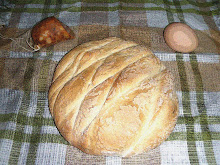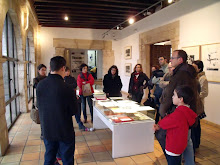
The Nazarene Jesus Father. A Baroque sculpture of Luisa Roldán
Jesus Father is venerated with a great fervour. It’s a tradition to kiss his feet and ask for the family’s health or whatever you wish.
The figure is allowed to go out in a procession every 100 year. Next time will be in 2011. People are very enthusiastic because not everybody can live this experience.
A death made it possible
death made it possible
The convent was built in the Baroque style with Salomon columns and a golden colourful altarpiece. The convent is a very pretty jewel itself, but the jewel of the crown is the Nazarene figure. It was sculpted by the Sevillian artist Luisa Roldán, the famous sculptor Luis Roldán’s daughter. It was the seventeenth century and in those days Seville was the metropolis of the Baroque art.
The figure was entrusted by the king Carlos II as a present for the Pope Innocence XI. The death of the king ruined the plans so the Nazarene remained at Luisa’s home until 1711, when father Hortelano bought it for Sisante’s convent.
How to get there
The village is well communicated at the crossroads of two motorways, Madrid- Valencia and Madrid –Alicante. Only one hour and fifty minutes from these cities.
Prices:
The entry to the convent is free, but not always allowed.























3 comentarios:
Buena entrada para nuestra "sección internacional". Me llama la atención el extraordinario efecto decorativo del interior de la iglesia conventual y esa profusión de retablos que proporcionan un efecto sobrecogedor, en consonancia con los postulados de la religiosidad contrarreformista española.
Montse, muy buen trabajo para un lugar y una imagen de calidad excepcional, a los que sin embargo, y como bien dejas caer, no siempre resulta fácil acceder.
Ya no recordaba la espectacularidad del efecto de la luz sobre el retablo.
Por cierto,muy bueno tu inglés.
Publicar un comentario